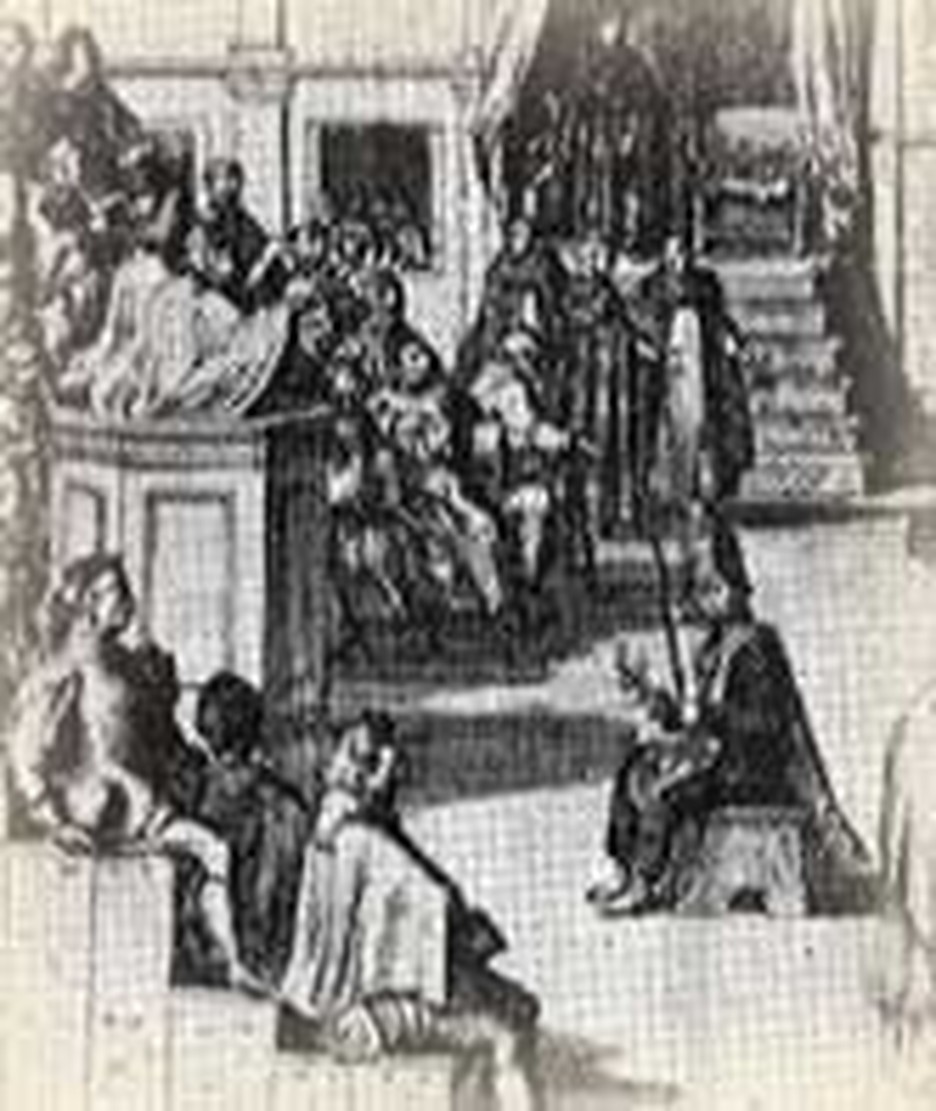
Spain's name is forever linked with the Inquisition. But the inquisition did not begin there. Pope Innocent III and Pope Gregory IX established the dreaded institution in the thirteenth century to combat heretical groups. What made the inquisition so terrible was the severity of both the questioning and the punishment and the lack of rights granted to the accused. Those who "snitched" on them could do so secretly. A victim was not permitted to challenge the witnesses against him or her.
When Isabella and Ferdinand united Spain in 1479, they were almost paranoid with fear of revolt. This made them highly susceptible to the whispers of the queen's confessor, Tomas de Torquemada. Of Jewish origin himself, he told her that Christianized Jews were secretly practicing their Hebrew faith and corrupting good Christians. Isabella was horrified and frightened. She asked the pope for permission to establish the inquisition in Spain. This was granted.
Under sadistic torture, suspects incriminated other people. These in turn accused almost anyone they could think of just to please their captors and win a reprieve from their torment. Every confession added to the alarm of the Catholic king and queen, suggesting widespread corruption of the Christian faith. Soon Spain began burning "heretics."
"Auto da fe" means "Act of Faith." The first Spanish auto-da-fe was held on this day February 6, 1481, when six men and six women, who refused to repent of alleged backsliding, were burned at the stake. They were but the first. 13,000 "heretics" were tried in the first twelve years of the Spanish Inquisition. Hundreds perished at the stake. Dressed in a penitent's gown, they were marched in processionals to the stake and urged to repent even as they were bound for the ordeal. Those who confessed were strangled before the fire was lit. Those who refused to admit wrongdoing, or who defiantly clung to their "heresies" were burned alive.
As hard as it is to believe, the Spanish Inquisition ran for 327 years. It was not abolished until 1808, during the brief reign of Joseph Bonaparte. In those three centuries, close to 32,000 people perished in the flames. About 300,000 others were forced to make some kind of reconciliation with the church. Even the 1808 "end" to the Spanish Inquisition wasn't really the end. Incredible as it may seem, King Ferdinand VII reestablished the dreadful apparatus in 1814! But six years later, revolution swept it away, hopefully forever. However, this is by no means assured; some defenders of the Roman Church were still excusing and justifying the practice in the twentieth century although it is impossible to see Christ winning followers by such means. Jesus turned away those who were not serious about following him.
The apparatus of the inquisition was not restricted to Europe. Spain exported it to the new world, where Mexican and Peruvian authorities burned men and women to death, starting in the sixteenth century. Portuguese priests also operated an inquisition in Goa, India.
Bibliography:
- Blotzer, Joseph. "Inquisition." The Catholic Encyclopedia. New York: Robert Appleton, 1914.
- Haskins, Charles Homer. Studies in Mediaeval Culture. New York: Frederick Ungar, 1960.
- Kamen, Henry Arthur Francis. The Spanish Inquisition : an historical revision. London : Weidenfeld & Nicolson, 1997.
- Sabatini, Rafael. Torquemada. Boston: Houghton Mifflin, 1924.
- Various encyclopedia and internet articles.
Last updated May, 2007.



